al-Mushanaf & Busan المشنف و بوسان
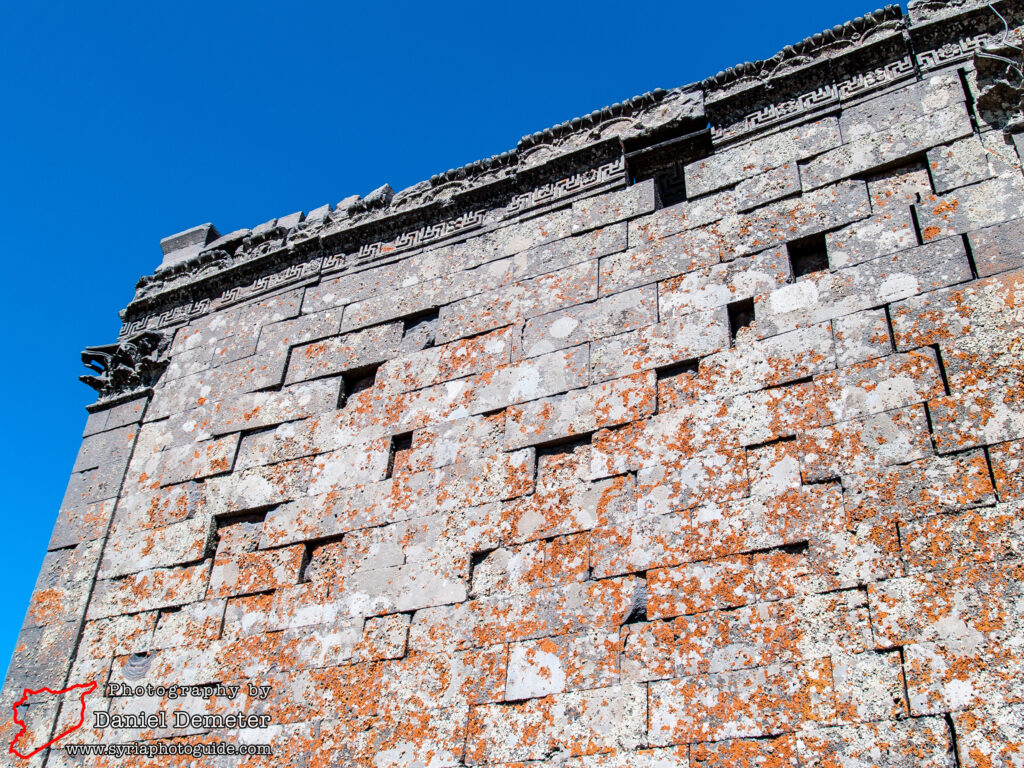
Located about 25 kilometers southeast of Shahba (شهبا), on the western edge of the volcanic wilderness area, the Druze village of al-Mushanaf (المشنف) contains one of the numerous Roman temples found in the region. Although small, the temple is fairly well-preserved and is a good example of the style of the period. It was constructed on the edge of a small artificial lake and was originally enclosed in a courtyard.
About two-thirds of the temple’s cella walls remain preserved in their original state, while the remainder was randomly reconstructed by local villagers, clearly unconcerned with maintaining the building’s original design. As a result, the porticoed front of the temple is an awkward mess of Roman masonry. The northern and western walls survive in almost perfect condition, while the southern wall is obscured by modern housing. The fine architectural decoration includes meanders, rosettes, and Corinthian capitals. Various Roman capitals and carvings are also scattered around the temple’s courtyard.
The temple carries an inscription dated to AD 171 referring to the Emperor Marcus Aurelius. However, the site was probably used for religious purposes long before that. Another inscription, to Herod Agrippa I, indicates the site was in use in the first half of the first century AD. While it is comparable in style to the twin temples in Atil (عتيل), recent researchers date its decoration to the last two decades before Christ (20-1 BC). The surrounding region was flourishing in Roman times, which can be seen in the amount of ancient stonework incorporated into modern buildings throughout the village.
The village of Busan (بوسان), which is six kilometers south of al-Mushanaf (المشنف), has a few interesting remains from the Roman and Byzantine periods. If you want to get far off of the beaten path, this would be a place to consider visiting. The villagers are friendly, but will no doubt be quite curious of your presence. Most impressive of the remains is a tower up the hill to the west from the center of the village. Elsewhere, most of the old stones have been incorporated into modern houses, and you can spot Roman capitals and carvings throughout.
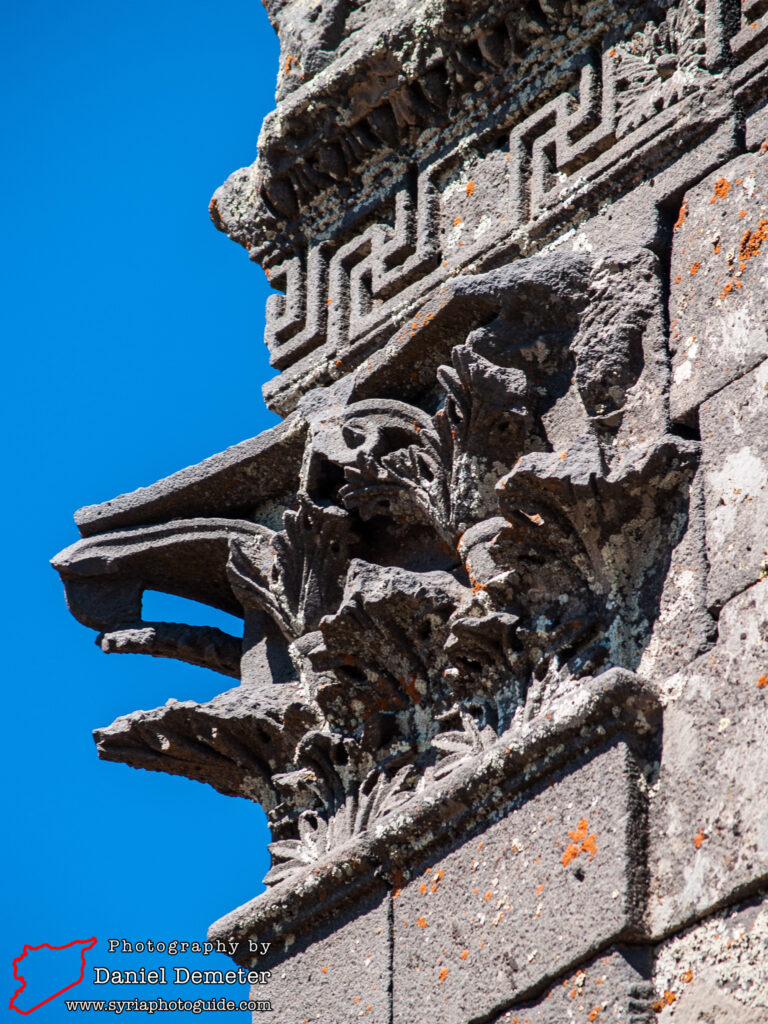
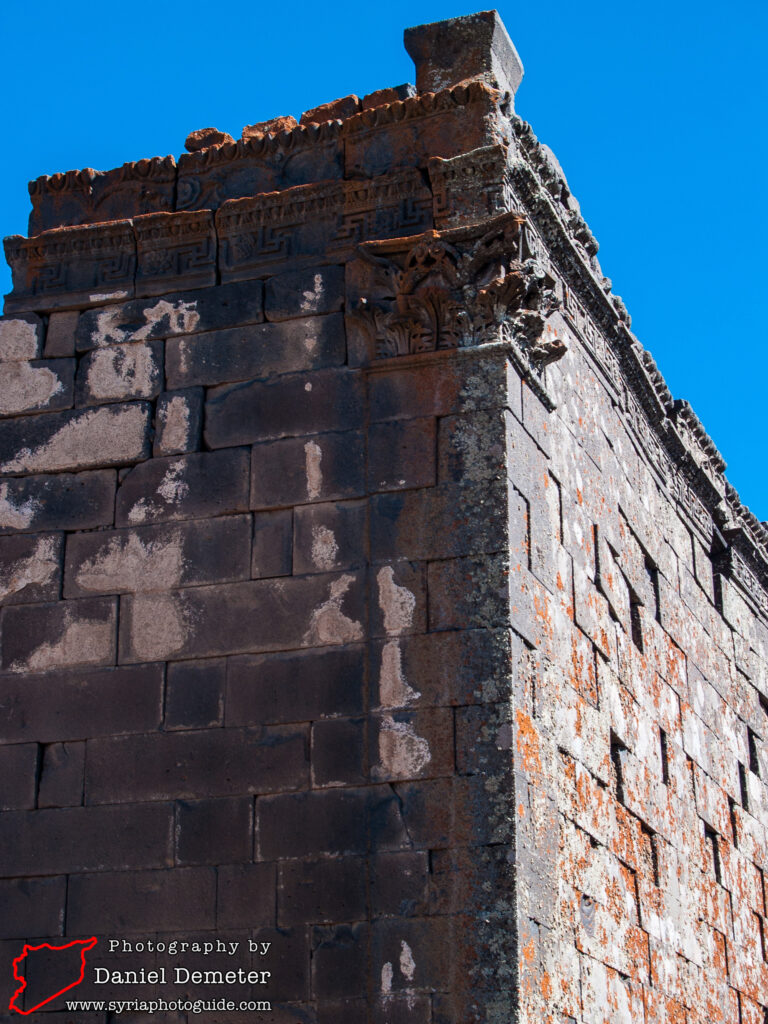
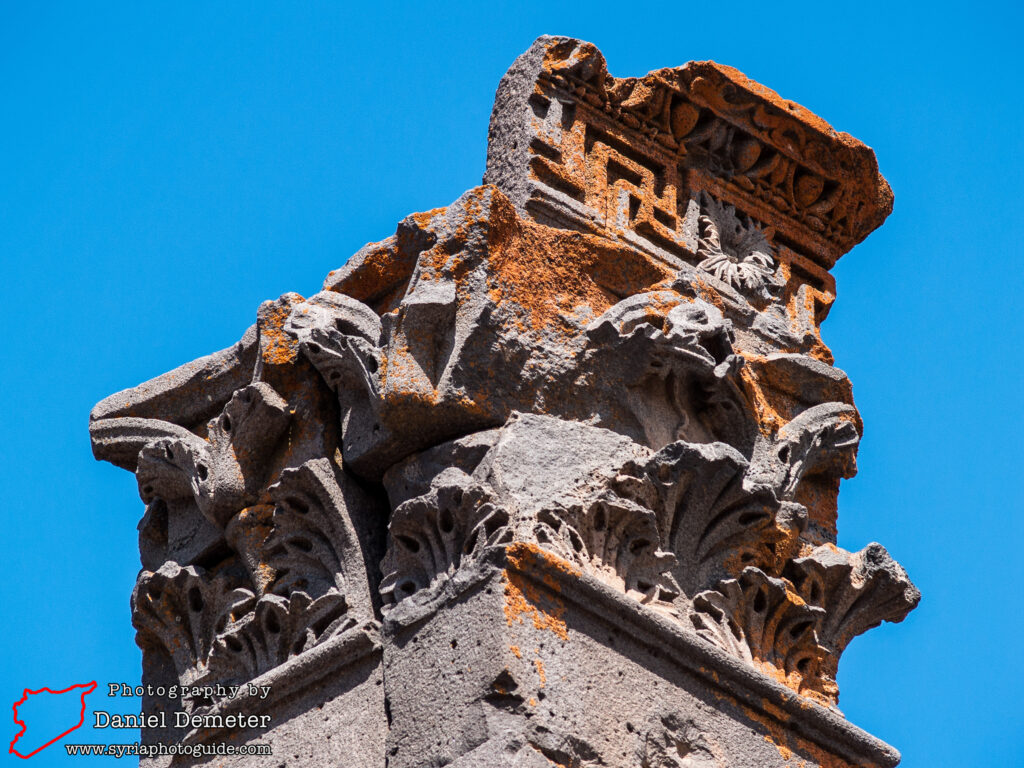
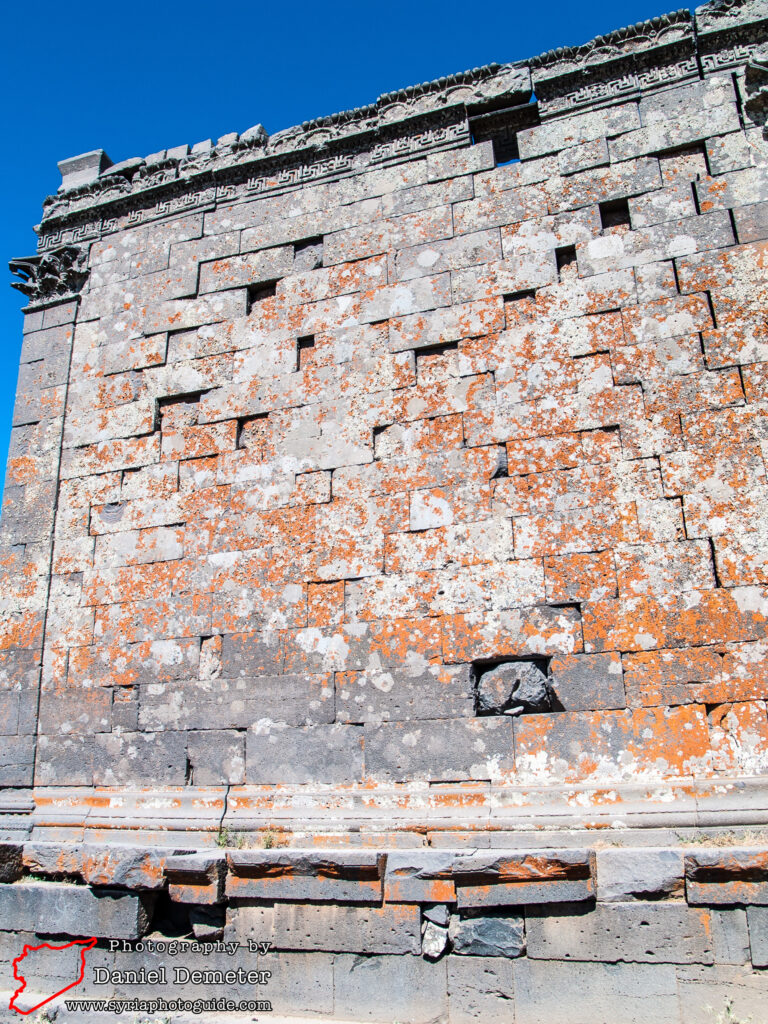
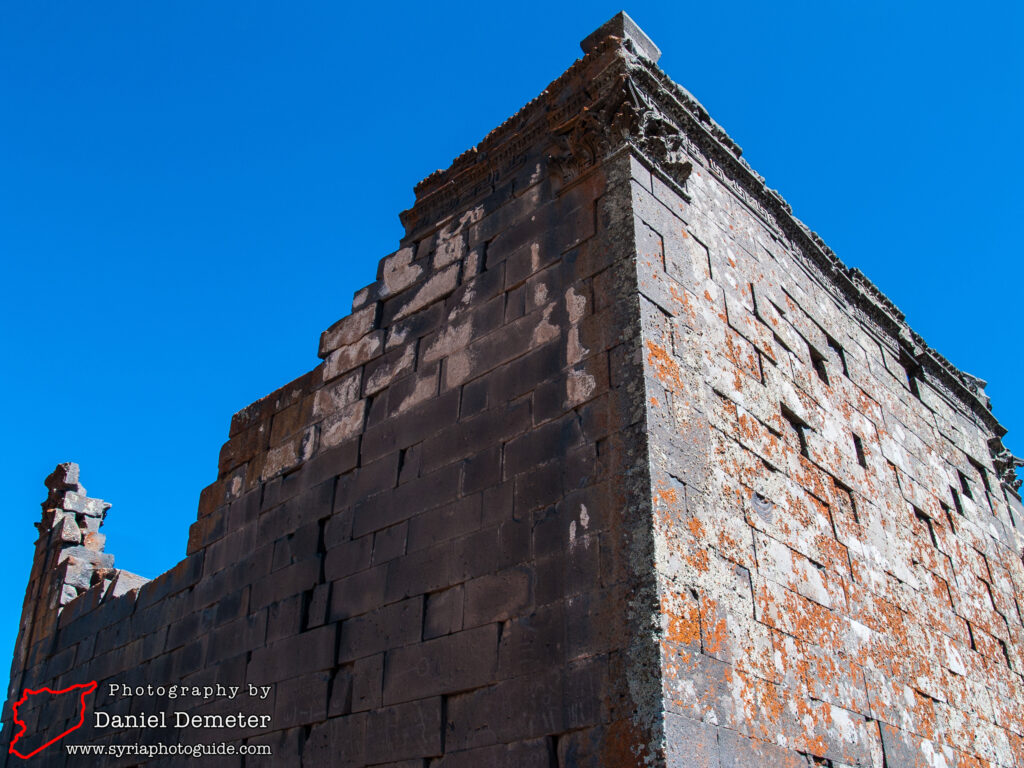
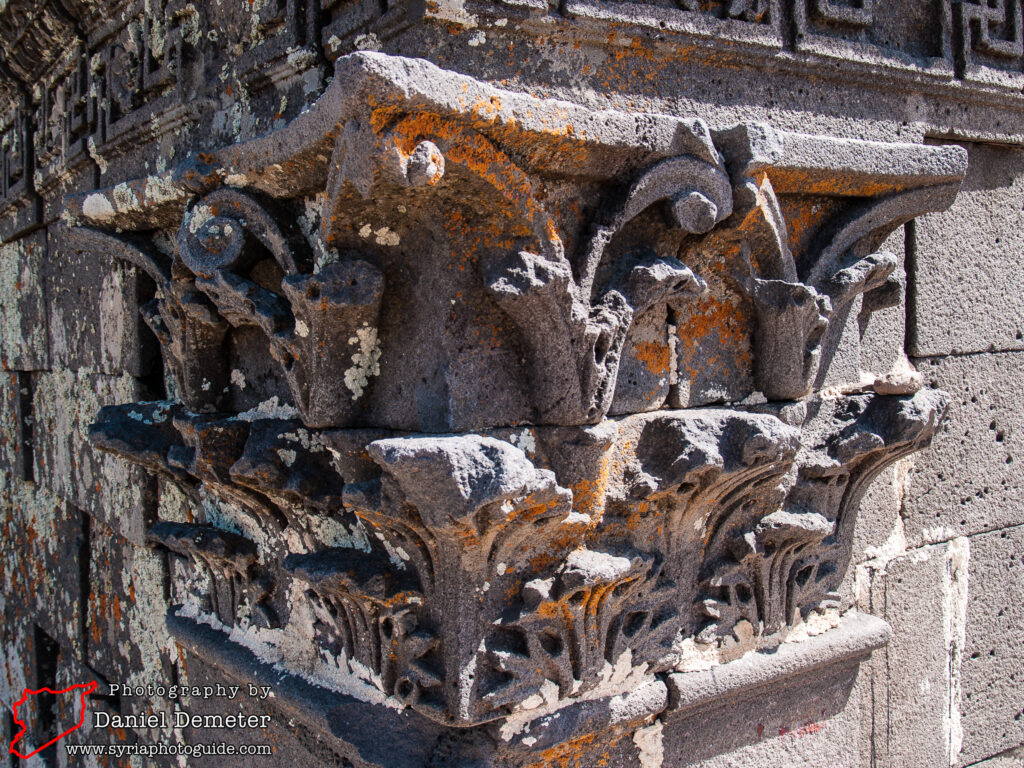
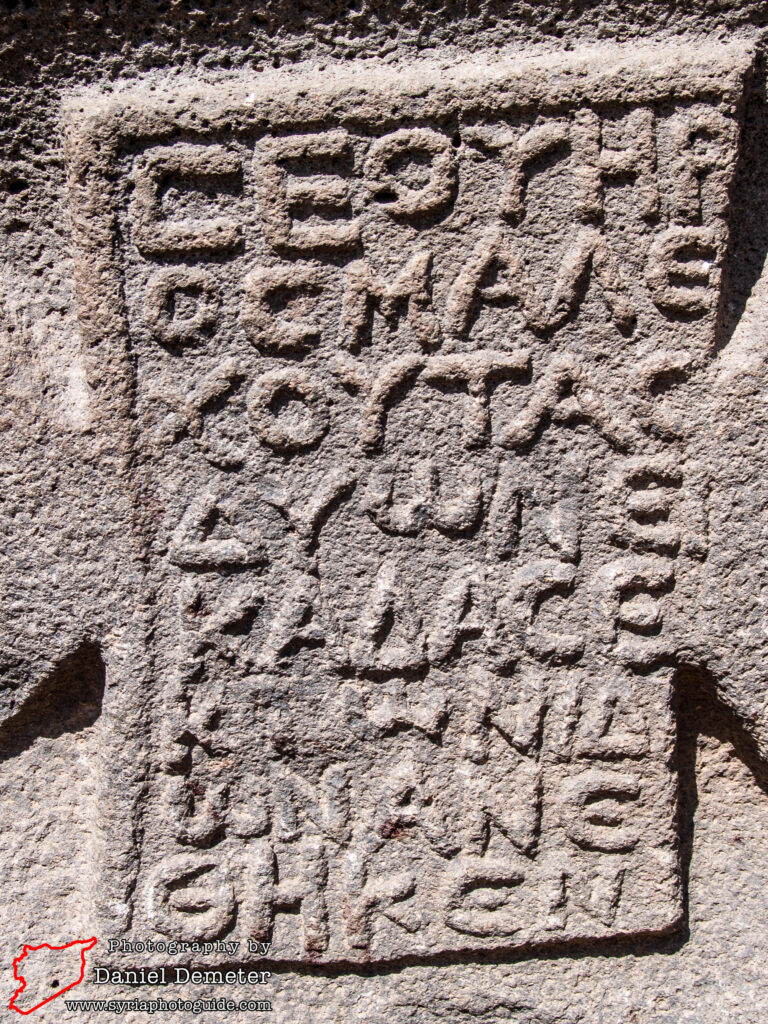
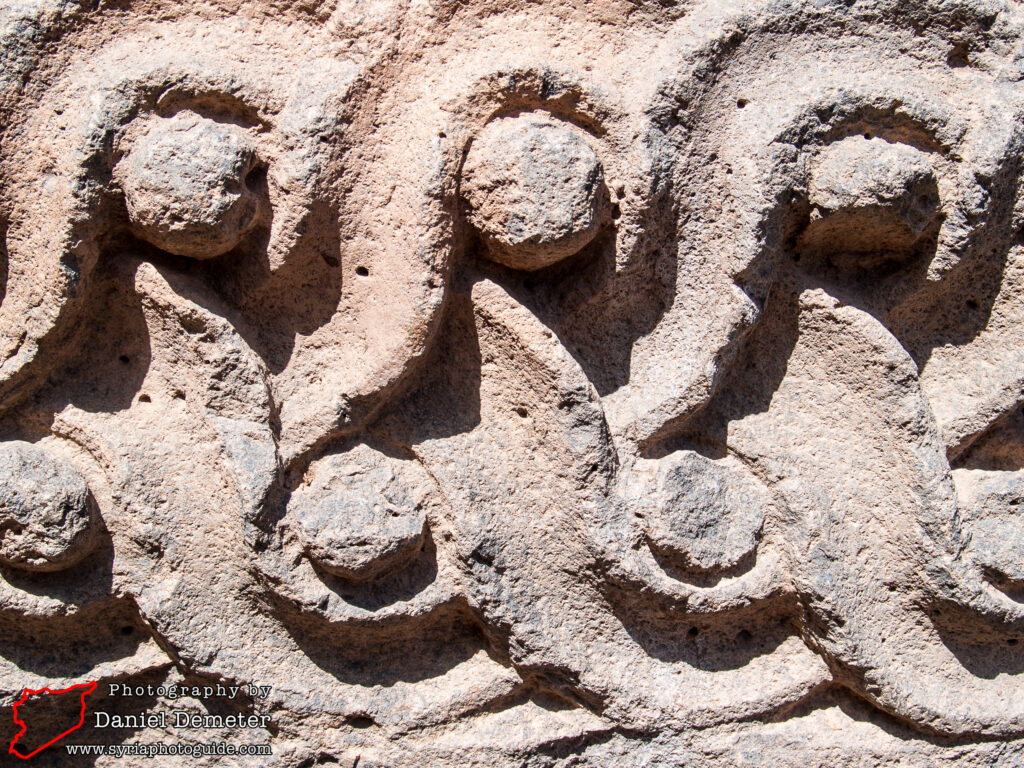
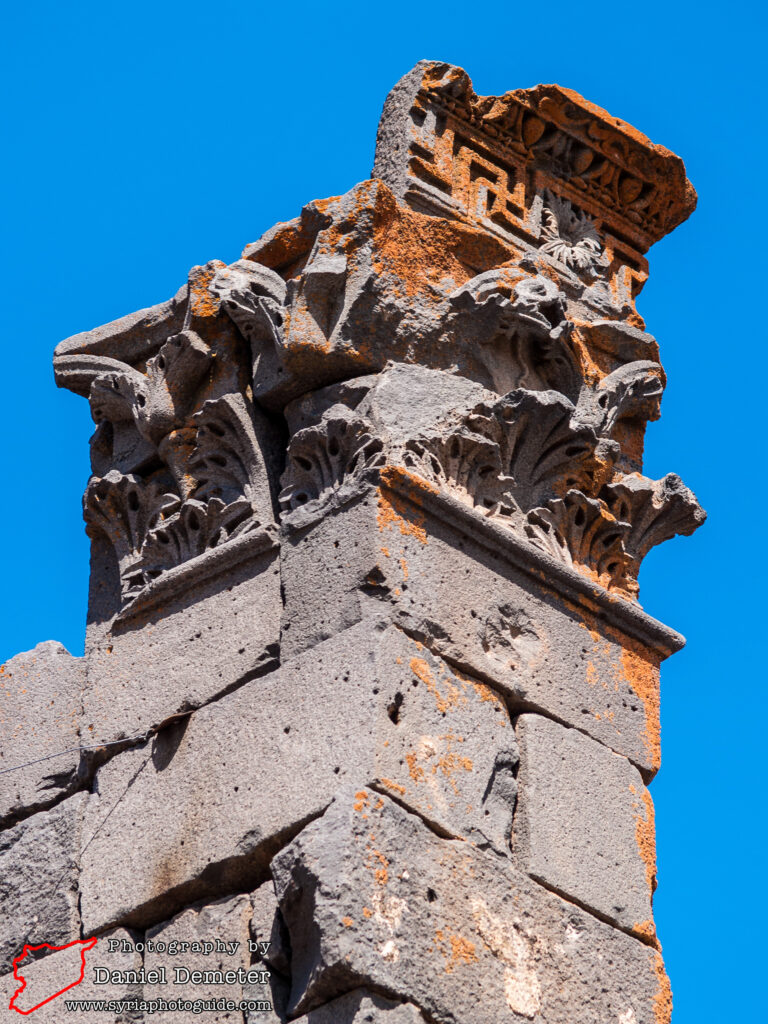
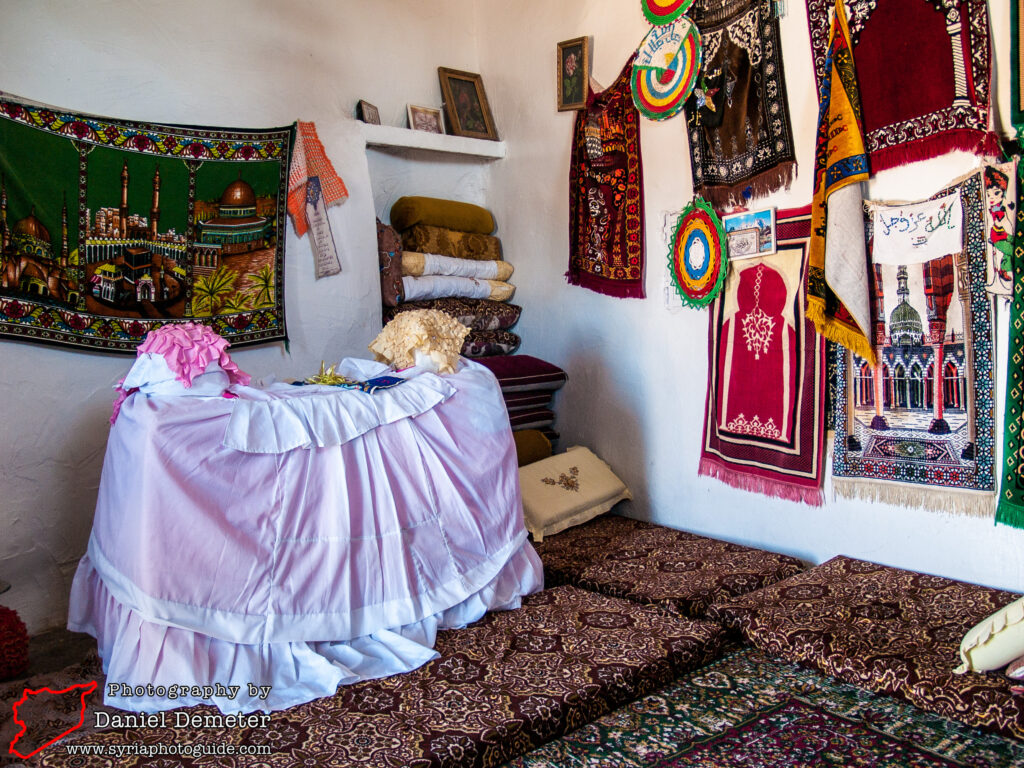
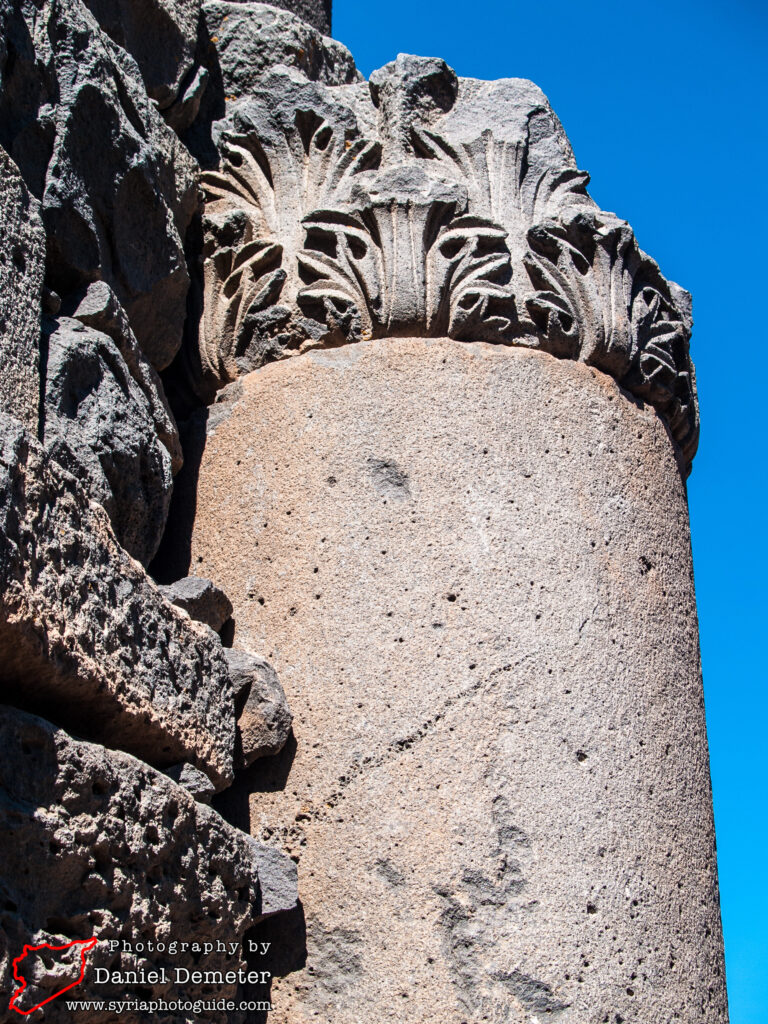
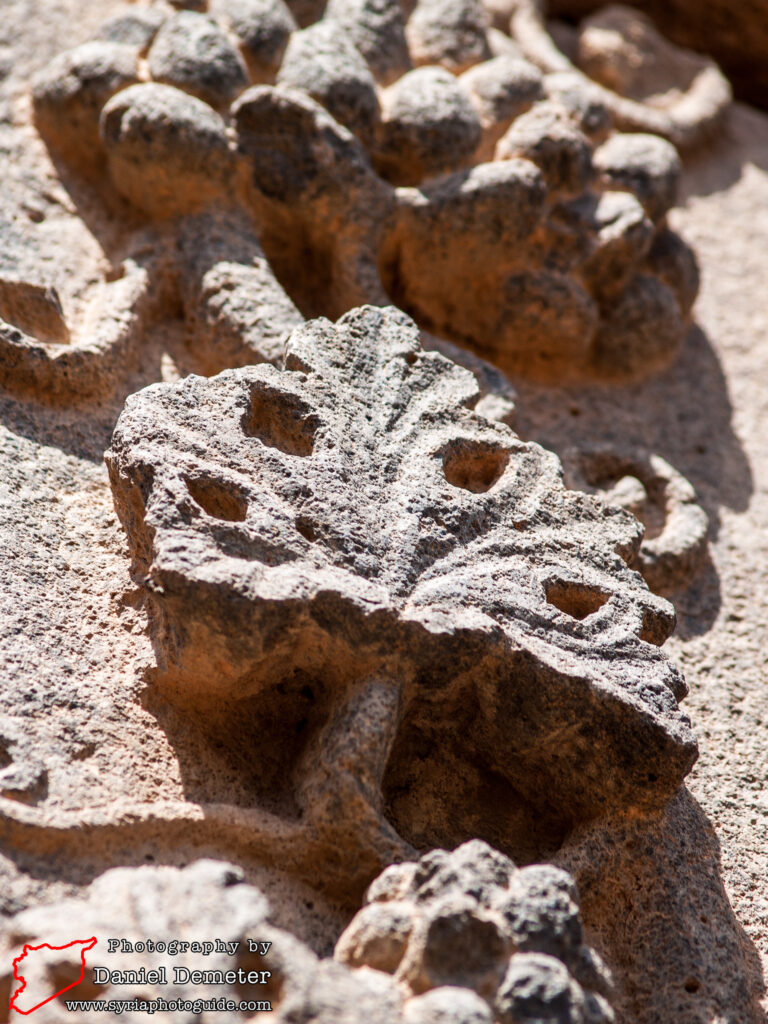
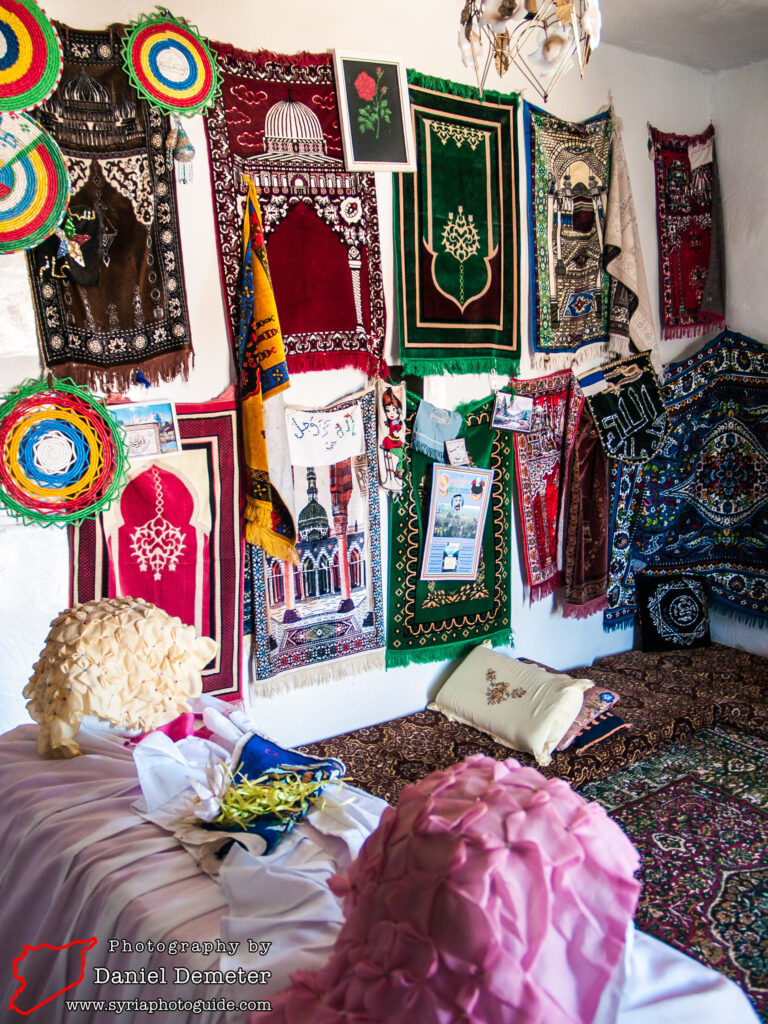
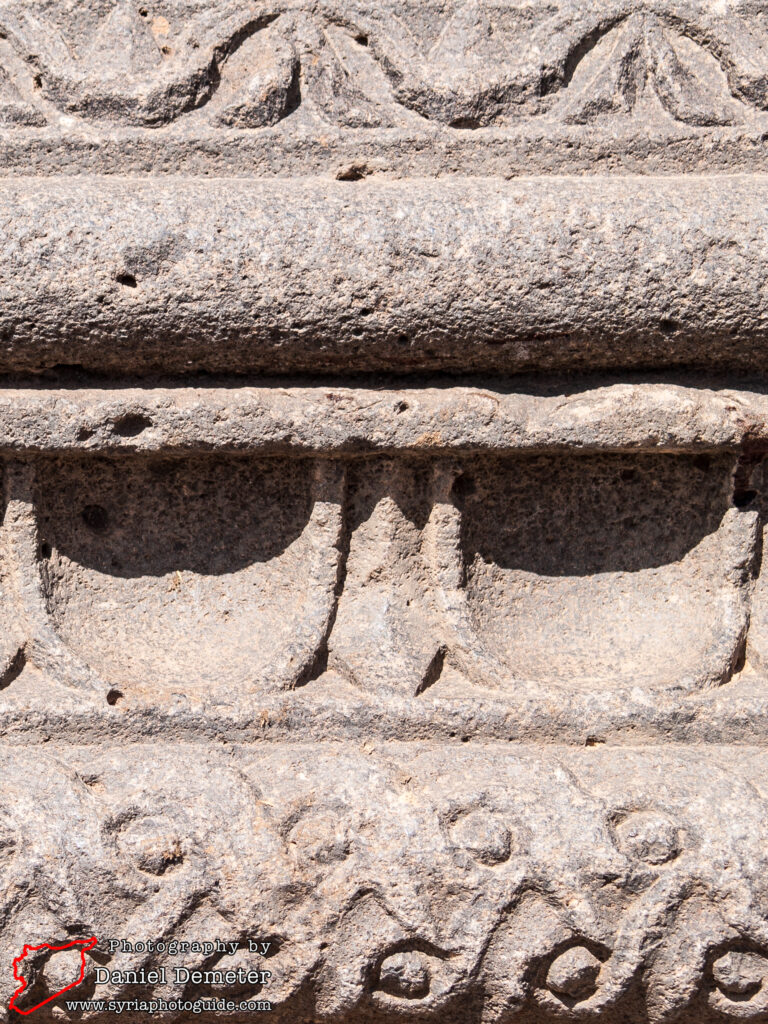
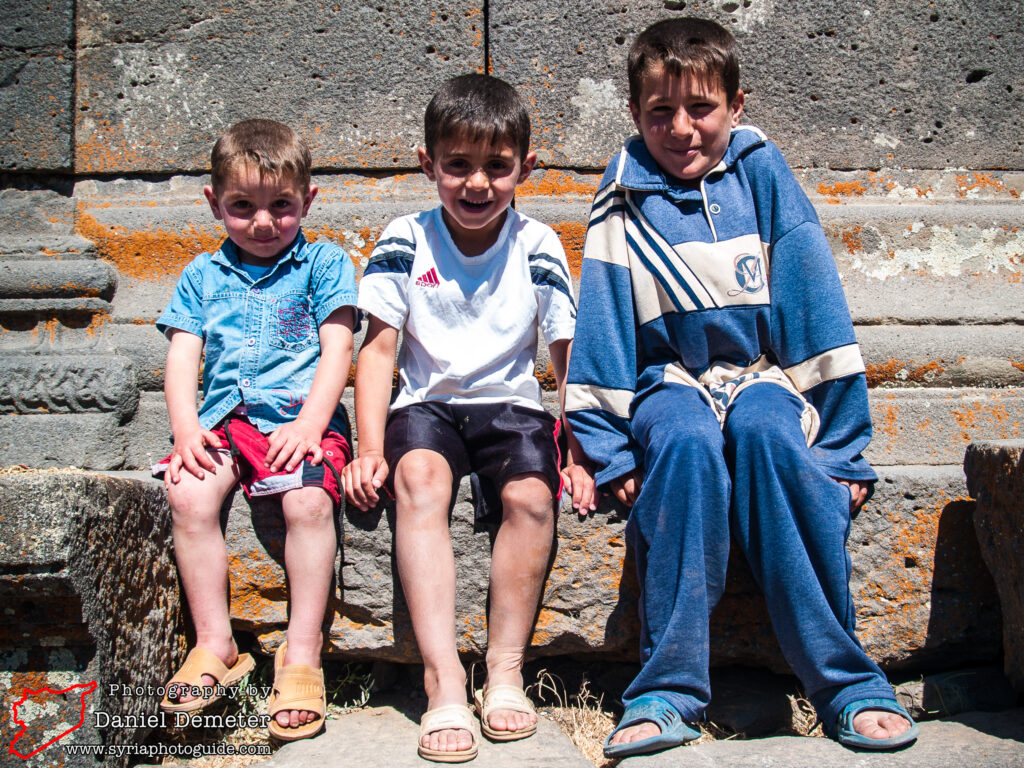
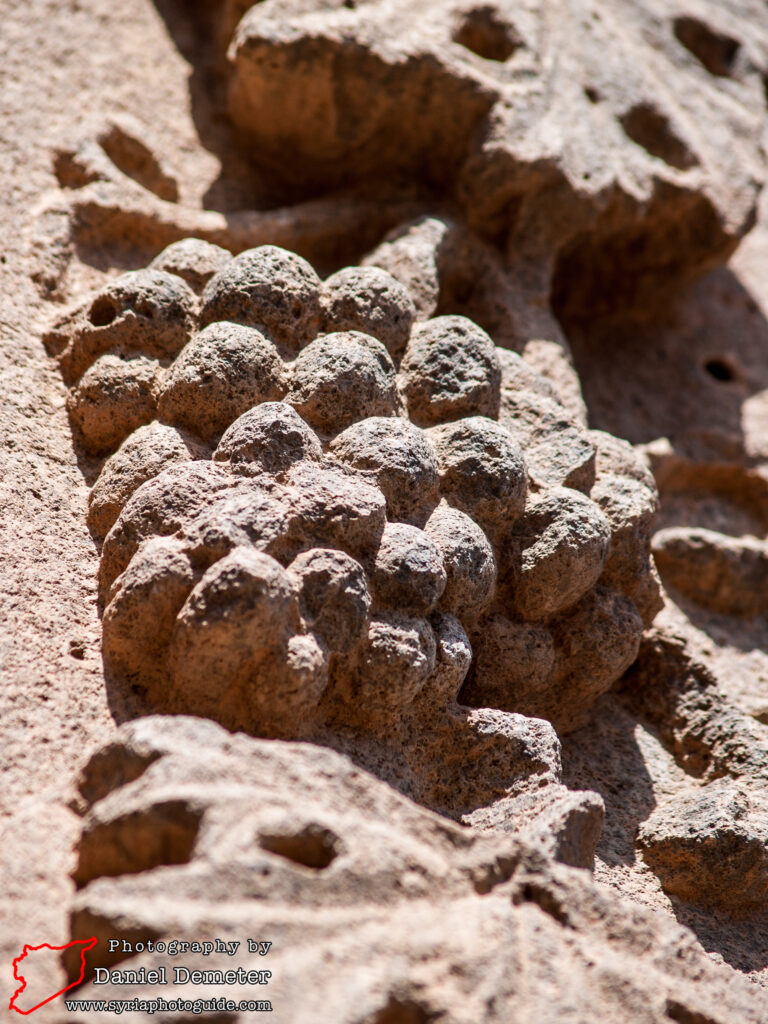
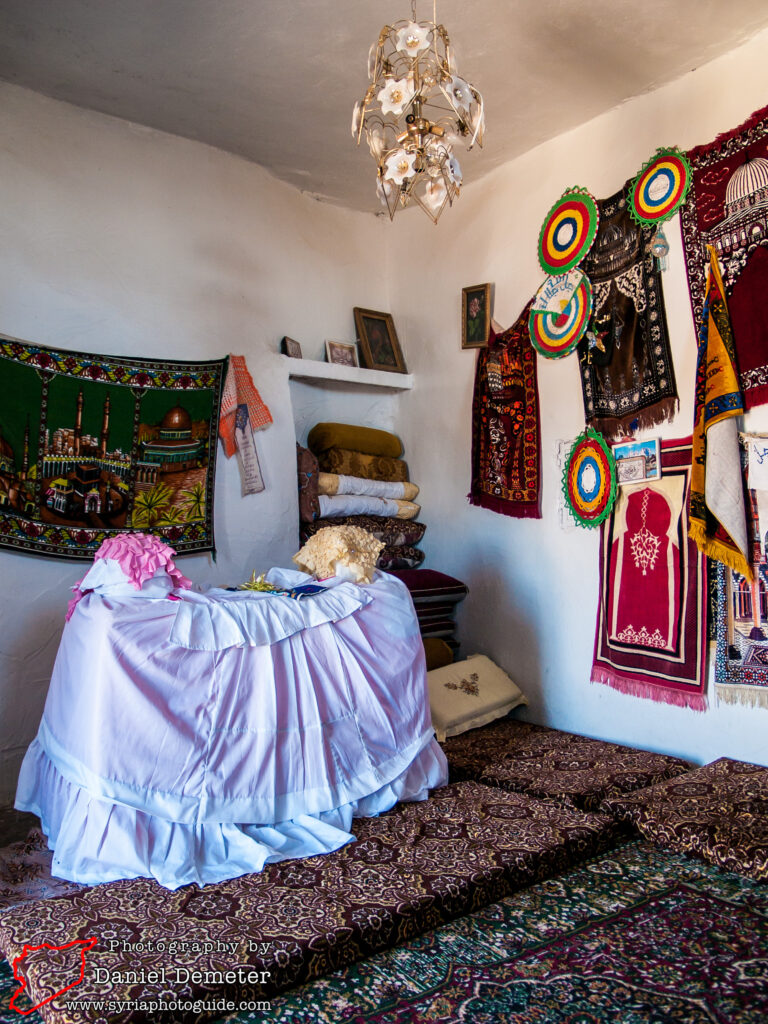
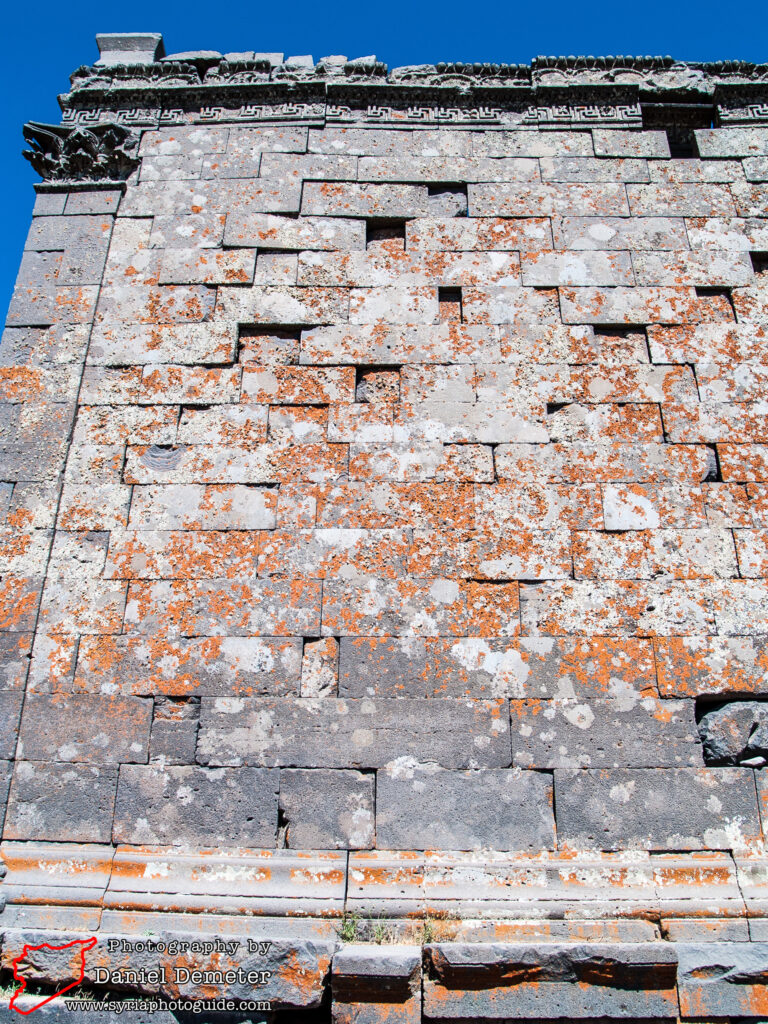
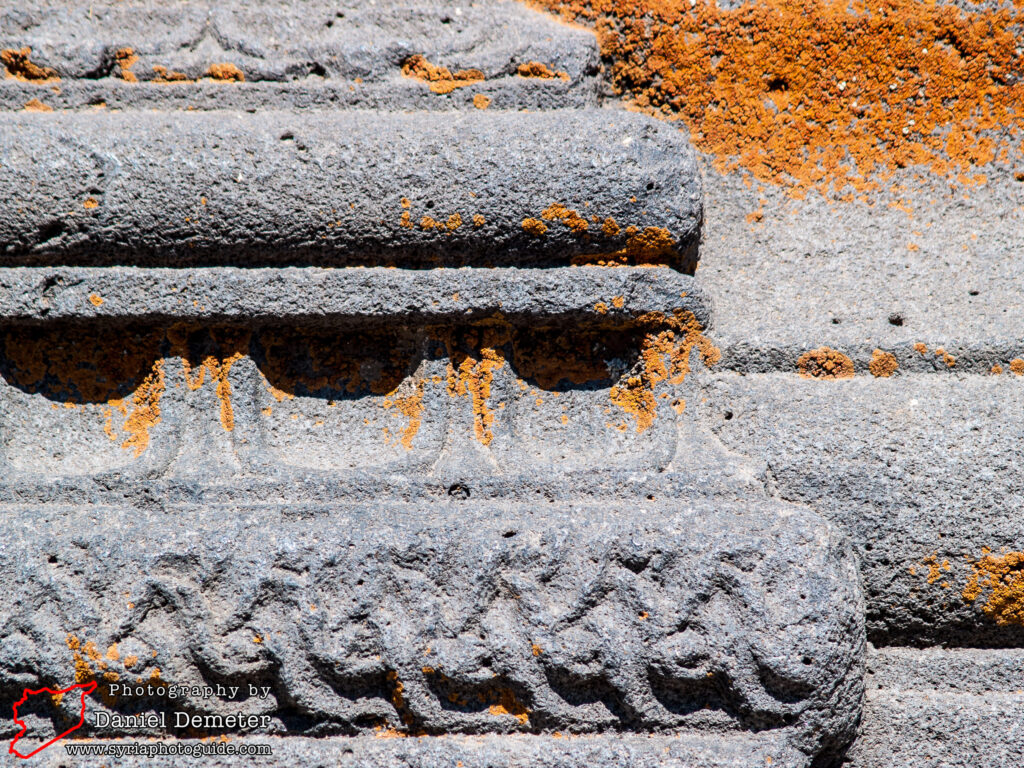
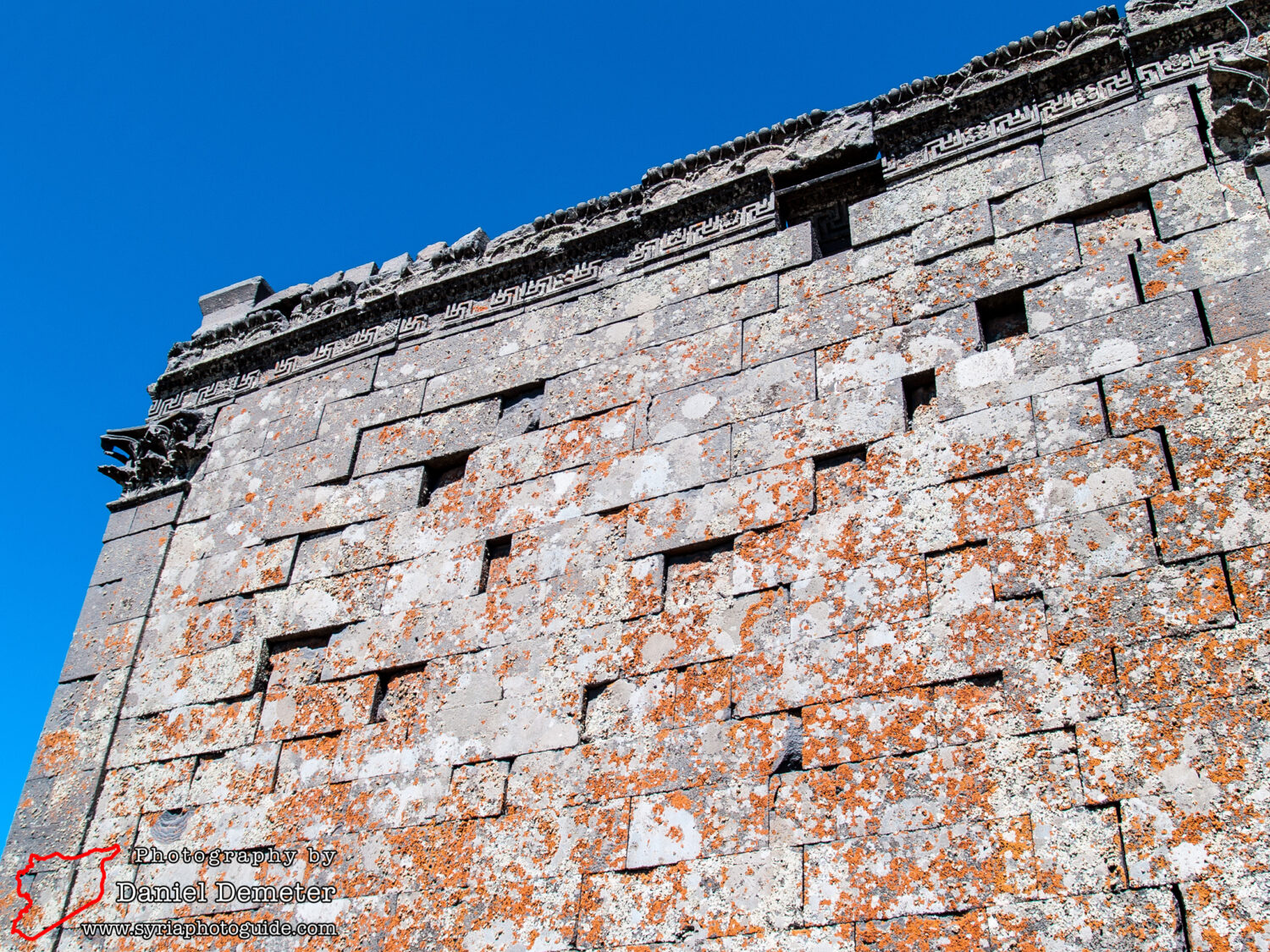
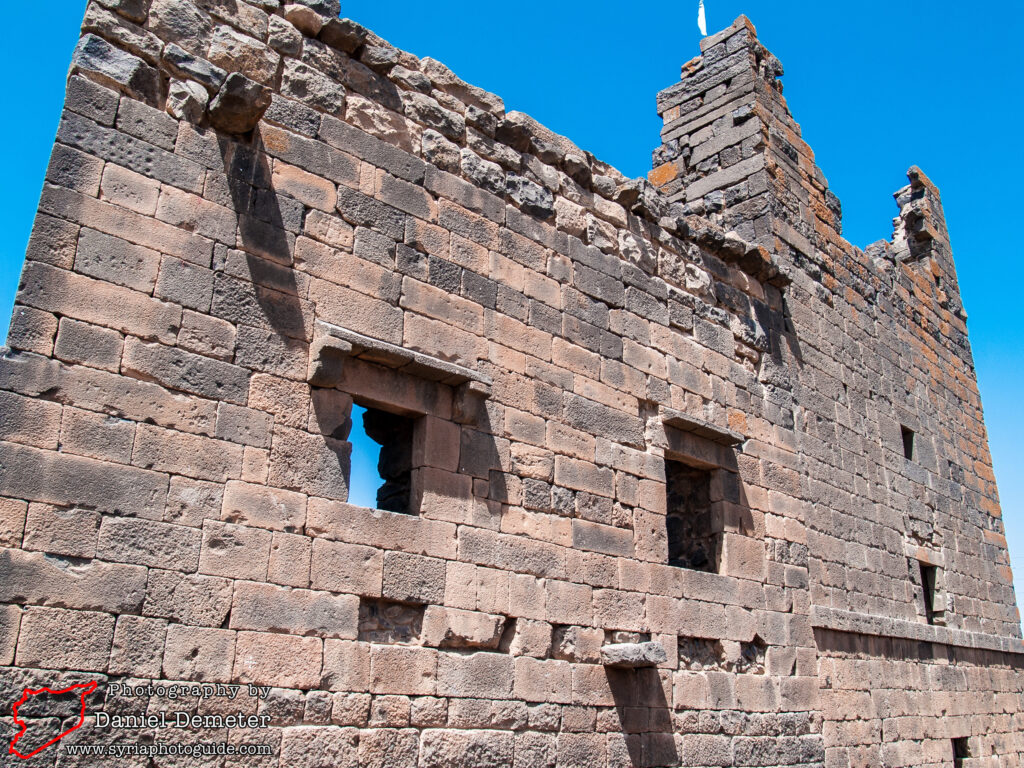
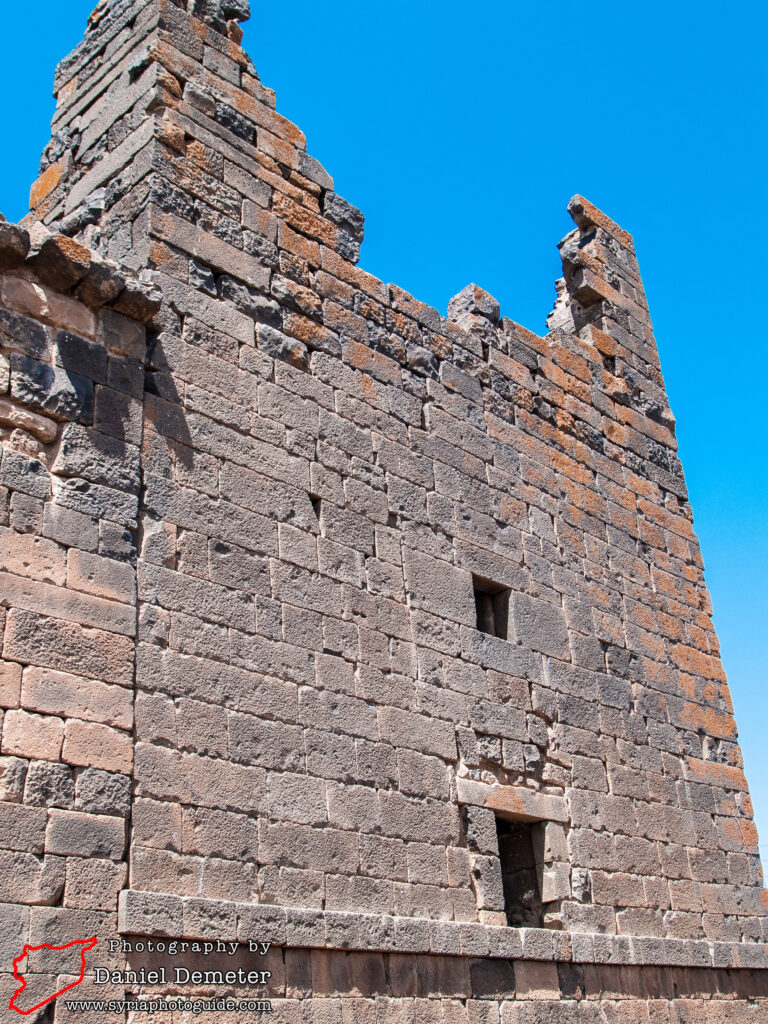
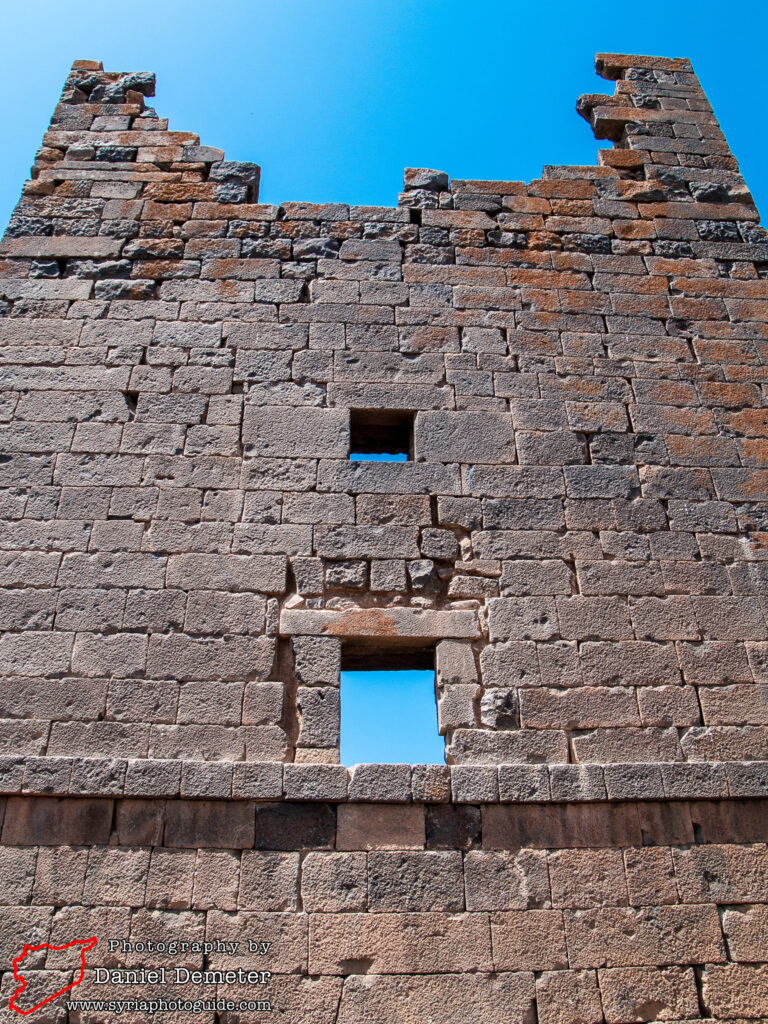
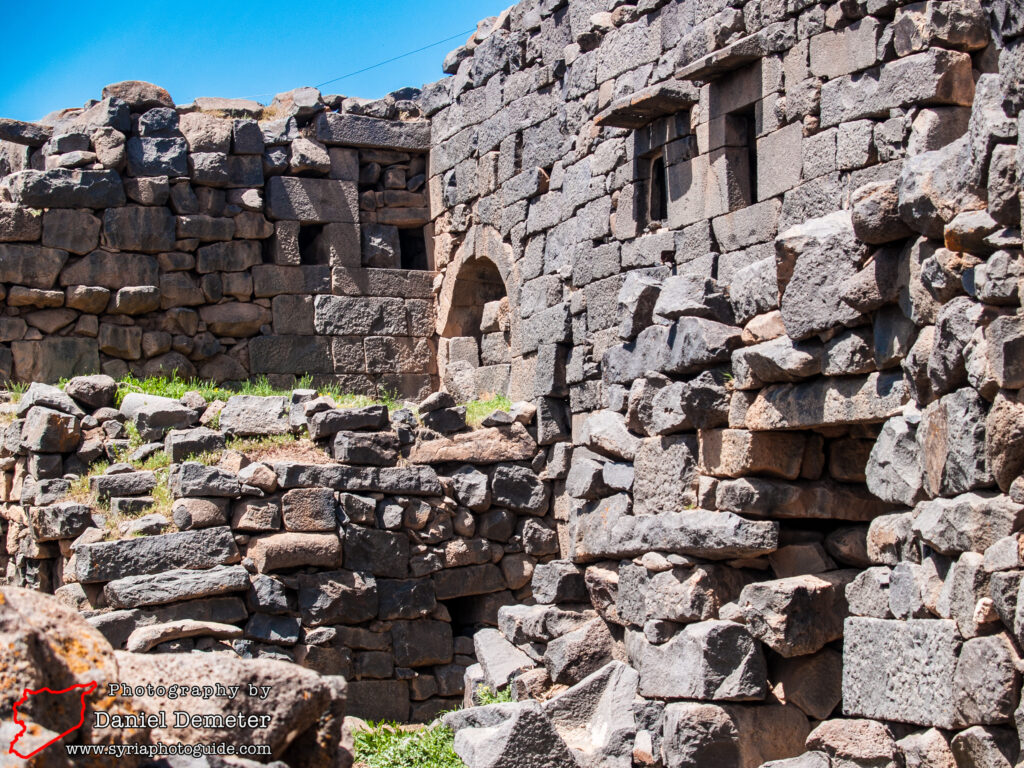
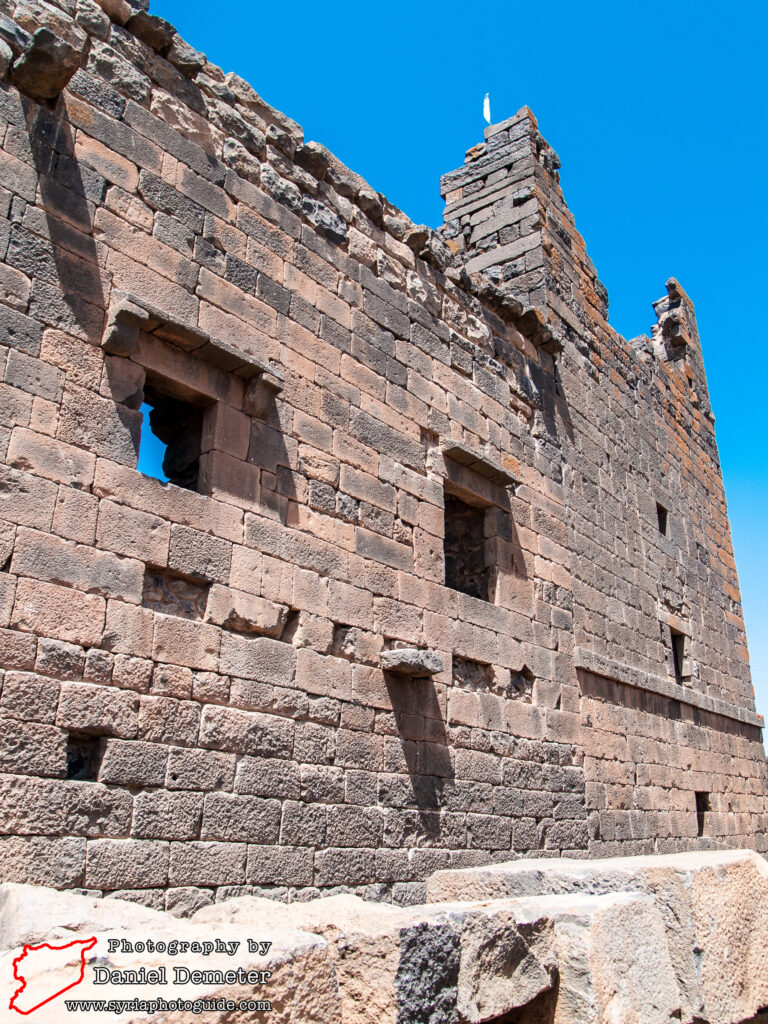
Getting There: Reaching al-Mushanaf (المشنف) isn’t too difficult, though public transportation is somewhat infrequent and stops running after about 4PM. From Shahba (شهبا), there are microbuses that depart on the street running east of the town center that take about 15 minutes. There are also older, large buses that travel from Shahba (شهبا) bus station, located in the northeast of town. These are slower, but less expensive.
Busan (بوسان) is only about six kilometers south of al-Mushanaf (المشنف), but there is no regular public transportation between the two. The six kilometers is a pleasant enough walk, however, and any passing traffic will likely offer you a lift. Alternatively, there are infrequent buses and microbuses between al-Suweida (السويداء) and Busan (بوسان). The microbuses take about 20 minutes, while the less expensive buses take about 30 minutes.
About four kilometers south of Busan (بوسان) is the village of Saleh (سالة), the classical Salamanestha, which has many old stone houses, incorporating a good deal of Roman and Byzantine masonry. There is nothing particularly interesting that stands out, but the villagers are friendly and will likely show you around. The buses and microbuses linking al-Suweida (السويداء) to Busan (بوسان) pass through Saleh (سالة).
Coordinates: 32°44’32.91″N / 36°46’37.61″E (al-Mushanaf)
Coordinates: 32°41’14.64″N / 36°47’18.52″E (Busan)
Transliteration Variants: al-Mushannaf, al-Mashanaf, al-Mashannaf, Bousan
Rating: 4 / 10
